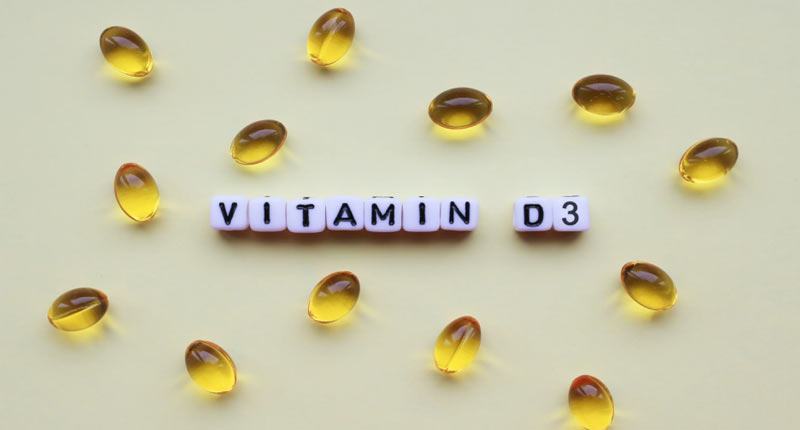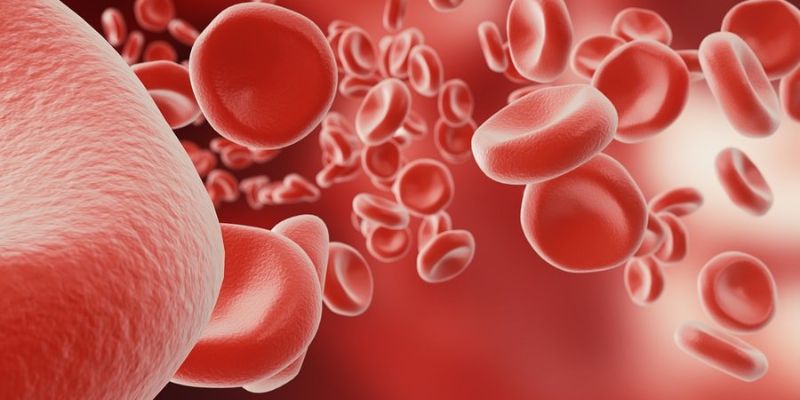
Are you looking for information about the difference b/w Vitamin D and Vitamin D3? Need help with what role each plays in your nutrition and overall health? You're not alone, as many people don't understand how these two terms are related. Here's a comprehensive guide to help get clarity on what sets them apart and why they are important!
We'll dive into the differences between Vitamin D vs.D3, the benefits of getting enough of either type of vitamin, sources in our diet, potential side effects with overexposure to each one, and more. Read on for an exploration into this essential topic for optimal health.
Vitamin D
Vitamin D is an essential nutrient that helps humans gain and maintain healthy bones, muscles, and immune systems. It's also key in helping to regulate calcium levels in the body. Vitamin D is usually found in Vitamin D2 (ergocalciferol) and Vitamin D3 (cholecalciferol). Both forms are important for health but aren't the same; each has slightly different biological activities.
Vitamin D can be obtained from certain foods like fatty fish, egg yolks, fortified milk, and some mushrooms; however, most people get their vitamin D from exposure to sunlight. When ultraviolet light hits your skin, it triggers a reaction that produces cholecalciferol, or vitamin D3. Vitamin D3 is then absorbed into the bloodstream and converted to calcitriol, the active form of Vitamin D, by the kidneys or liver.
Having enough vitamin D in your system is essential for many physiological functions, such as; aiding in the absorption of calcium from food sources, boosting immunity, promoting muscle strength and growth, and reducing inflammation throughout your body. It is also believed that having a healthy Vitamin D level can reduce risks of heart disease, Type 2 diabetes, multiple sclerosis, and cancer.
Vitamin D2
Vitamin D2 also known as ergocalciferol, is a form of vitamin D found in some types of food, such as mushrooms. It can also be taken orally or made synthetically and used to treat Vitamin D deficiency.
Vitamin D3
It is the most active form of vitamin D and is created when sunlight hits the skin. It’s also found in fatty fish, eggs, milk, and other animal-based foods. Vitamin D3 helps increase calcium absorption in the body, which helps build strong bones and teeth. It’s also essential for proper immune function, brain development, and muscle growth.
D3 versus vitamin D
Although vitamin D and vitamin D3 are both crucial for human health, there are some significant distinctions between the two. While vitamin D3 is produced when sunlight strikes the skin or is present in animal-based meals, vitamin D2 can be found in some foods, such as mushrooms.
Vitamin D3 is also more effective at increasing calcium absorption in the body than Vitamin D2; however, they help boost immunity, muscle strength, and growth and reduce inflammation. Ultimately, getting adequate amounts of both forms of vitamin D from your diet or exposure to sunlight is important.
Uses
Vitamin D is important for healthy bones, muscles, and immune systems. It’s also used to regulate calcium levels in the body and increase calcium absorption from food sources.
Exposure to sunlight triggers a reaction that produces Vitamin D3, which helps build strong bones and teeth, boosts immunity, promotes muscle growth, and reduces inflammation.
Sources
Vitamin D2 can be found in certain foods, such as mushrooms, while Vitamin D3 is created when sunlight hits the skin or in animal-based foods, such as fatty fish, eggs, milk, and other dairy products.
The Benefits of Vitamin D
1. Boosts Immunity
Vitamin D enhances the immune system and helps fight illnesses, infections, and diseases.
2. Helps Prevent Cancer
Research suggests that vitamin D may reduce the risks of certain cancers, such as breast, colon, and prostate cancer.
3. Reduces Inflammation
Vitamin D can help reduce inflammation in the body, lowering your risk for several chronic illnesses like heart disease and diabetes.
4. Improves Mood
Low vitamin D levels have been linked to depression, so getting enough of this nutrient may help improve moods.
5. Regulates Blood Pressure
Studies have found that adequate vitamin D levels can help regulate blood pressure levels in the body.
6. Enhances Cognitive Function
Getting enough vitamin D can help improve cognitive function, enhancing performance in school and work.
7. Improves Bone Health
Vitamin D helps to absorb more calcium from food sources which is essential for strong bones and teeth.
8. Aids in Weight Loss
Studies have found that people with higher vitamin D levels tend to lose weight more easily than those with low nutrient levels.
9. Enhances Muscle Strength and Growth
Vitamin D helps produce proteins for muscle growth, strength, and development.
10. Improves Sleep Quality
Adequate amounts of vitamin D have been shown to improve sleep quality by helping regulate hormones associated with sleep cycles.
Benefits of Vitamin D3
1. Enhances Digestion
Vitamin D3 helps the body absorb more nutrients in food, thus aiding digestion and overall health.
2. Strengthens Bones and Teeth
Getting enough Vitamin D3 can help promote bone growth and strength and protect gums from receding due to poor dental hygiene.
3. Boosts Immunity
Vitamin D3 has been shown to fight off bacteria and viruses, helping to keep the immune system healthy and strong.
4. Reduces Inflammation
Studies have found that getting adequate vitamin D3 can help reduce inflammation in the body, which is essential for good health.
5. Improves Cognitive Function
Vitamin D3 helps maintain cognitive health, improving focus, memory, and learning.
6. Regulates Hormone Levels
Vitamin D3 helps to regulate hormones associated with sleep cycles and overall well-being.
7. Enhances Muscle Strength and Growth
Getting enough Vitamin D3 can help promote muscle growth, strength, and overall development.
8. Improves Moods
Low vitamin D levels have been linked to depression, so getting enough of this nutrient may help boost moods and reduce anxiety.
9. Prevents Diabetes
Studies suggest adequate amounts of vitamin D3 can help lower the risk for type 2 diabetes by improving insulin sensitivity.
10. Reduces Risk For Heart Disease
Having a healthy level of vitamin D3 can reduce the risk of heart disease by helping to regulate cholesterol levels in the body.
Potential Side Effects
Although both Vitamin D2 and Vitamin D3 are essential for optimal health, overexposure to either type of vitamin can lead to potential side effects such as nausea, vomiting, constipation, and headaches.
Overexposure to sunlight also increases the risk of skin cancer, so limiting time spent in direct sunlight without protection is important.
FAQs
Q: What are some Vitamin D and D3 sources in our diet?
A: Food sources offer several ways to get your daily dose of either type of vitamin. Some natural sources of vitamin D include fatty fish such as salmon, tuna, and mackerel; egg yolks; mushrooms; fortified milk or yogurt products; cereals with added vitamin D; orange juice with added vitamin D; cheese; beef liver; cod liver oil supplements.
Q: Should I take both vitamin D and D3?
A: Speaking with your doctor or nutritionist before taking any vitamin is important. Vitamin D and D3 should not be taken together, which can lead to a vitamin overdose. Additionally, it is important to stay within the recommended levels of each vitamin for optimal health.
Q: Should I take vitamin D or D3 daily?
A: Generally, taking either vitamin D or D3 in supplement form is recommended daily. Vitamin D can be taken with or without food, while vitamin D3 should be taken with a meal containing fat for absorption. It is important to always check the label and dosage of any vitamins you are taking.
Conclusion
Vitamin D and D3 are both essential for overall health. While both offer benefits, they should be taken separately, which can lead to potential side effects. It is important to get adequate amounts of either type of vitamin through diet, supplements, and controlled exposure to sunlight. Speak with your doctor or nutritionist before starting any new supplement regimen to ensure you get the right amount for your needs. By understanding the difference between Vitamin D vs. D3 and their respective uses, sources, benefits, and potential side effects, you’ll be better prepared to make informed nutritional choices!





